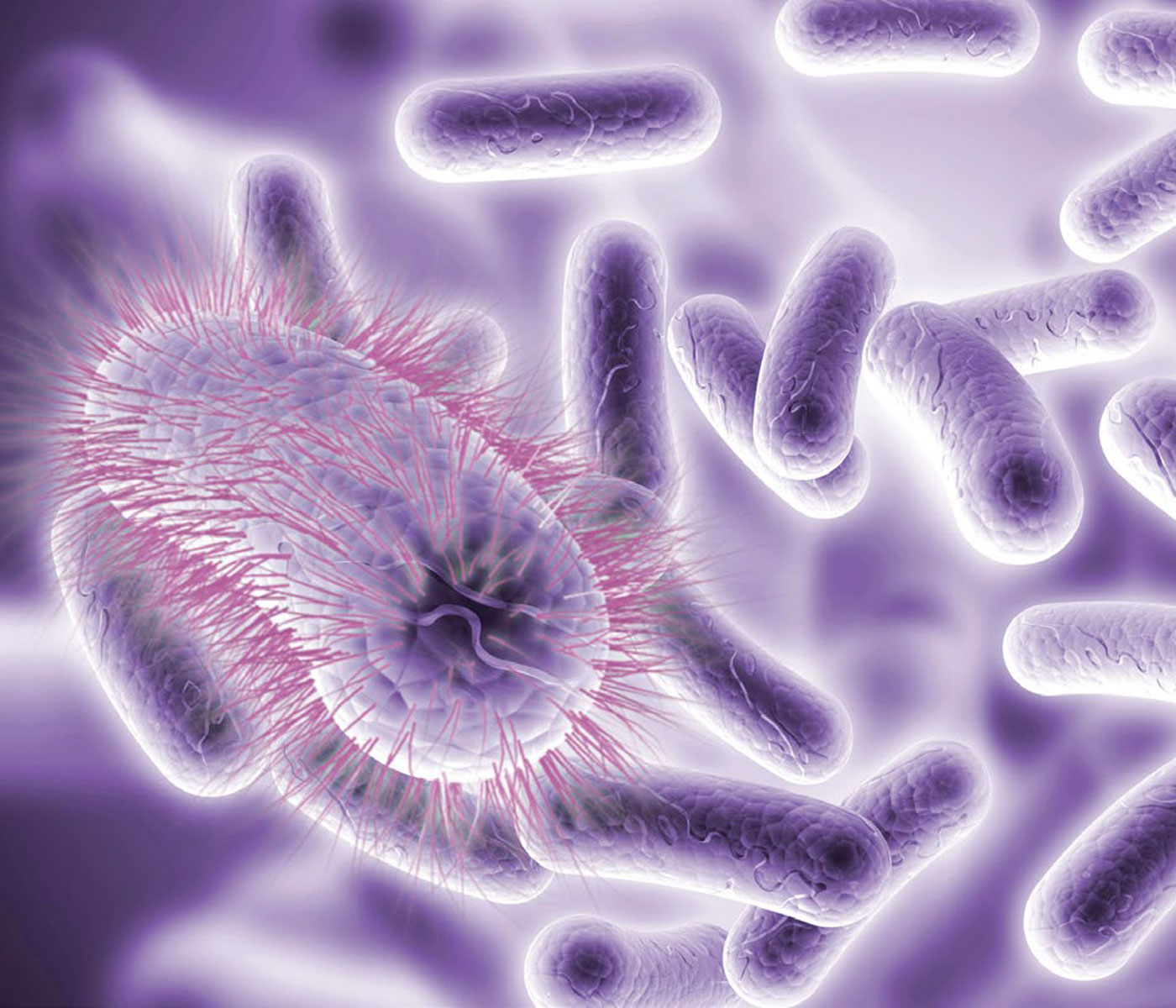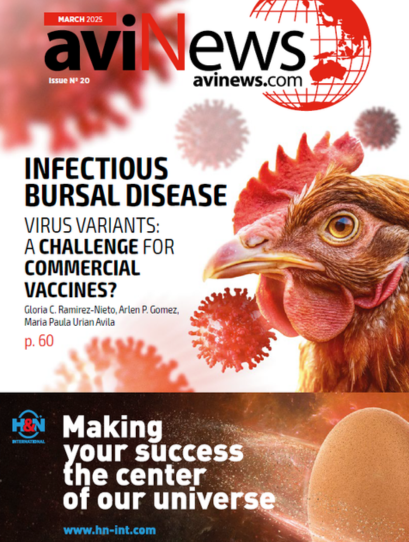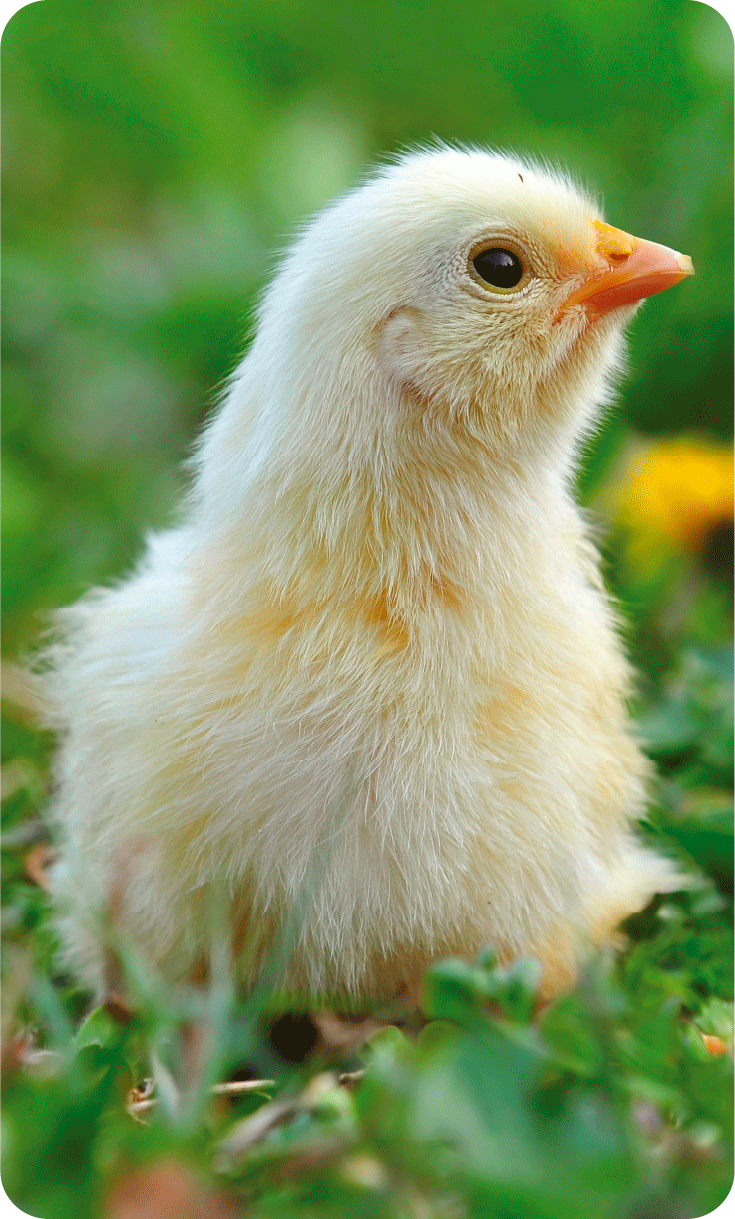Makikita ang content sa: English Indonesia (Indonesian) Melayu (Malay) ไทย (Thai) Tiếng Việt (Vietnamese)
The poultry industry in the United States has done a tremendous job over the past two decades in reducing Salmonella prevalence on poultry carcasses and products at processing plants. During the same time, the per capita consumption of chicken has increased steadily (www.nationalchickencouncil.org).
However, the rates of Salmonella illnesses in the United States from all sources has remained relatively constant over this time frame, and poultry remains among the sources of Salmonella illness (cdc.gov/ifsac/php/dataresearch/annual-reports/).
During 2024 the U.S. government proposed tightened regulations, while researchers have continued to seek effective technologies, and industry leaders have focused on Salmonella control systems.
Below is a list of 10 significant themes related to Salmonella in poultry that have received a lot of attention in recent years:
1.SALMONELLA FRAMEWORK PROPOSED REGULATIONS
- In August 2024, the United States Department of Agriculture Food Safety Inspection Service (USDA – FSIS) issued a proposed “Salmonella Framework” for poultry after years of considering various regulatory options (U.S. Fed. Register vol. 89 no. 152).
- At the time of this article, the proposed framework was still not yet finalized or approved.
- One of the debated components of the framework was that USDA would declare poultry products adulterated if containing 10 cfu/mL(g) or greater of certain Salmonella serotypes in chicken carcasses, parts, comminuted chicken, and comminuted turkey.
- These certain serotypes for chicken products included Enteritidis, Typhimurium, and I 4,[5],12:i:- (also called monophasic Typhimurium), and for turkey included Hadar, Typhimurium, and Muenchen.
- In addition, the framework would require processing plants to implement Microbial Monitoring Plans based on Statistical Process Control principles.
- However, the extent of these proposed Salmonella Framework regulations that will actually be implemented is yet to be finalized, due to the numerous public comments submitted challenging various components of the framework from a scientific & regulatory perspective.
2. SALMONELLA CROSS-FUNCTIONAL TEAMS
- Poultry companies have proven that food safety success requires a team approach.
- The advantage of having both preharvest and processing food safety expertise is that different team members have knowledge that can be used to collectively lead to continuous improvement.
- Many poultry companies utilize their Food Safety Managers or Directors to help organize these team initiatives and foster communication.
- Poultry veterinarians, live production managers, and nutritionists help companies determine which interventions to administer at preharvest, while consistently monitoring trends.
- Processing Plant Operations Managers are leveraging plant technologies, antimicrobials, and engineering expertise to further reduce pathogen loads.
- Lab Managers and statistical experts provide trends in microbial results.
- Prudent food safety teams also determine when they need to contact outside resources and subject matter experts to help optimize pathogen reduction.
- It is recommended that each complex within an integrated complex have a formal, engaged cross-functional Salmonella management team.
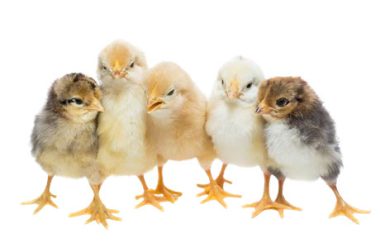
3. DEVELOPING UPDATED SALMONELLA MONITORING & SAMPLING PROGRAMS
- Any effective food safety program in live production or processing requires a written plan.
- Food Safety Professionals can provide valuable skills in formulating food safety programs from preharvest through processing, which include the purpose, scope, monitoring procedures, and recordkeeping systems.
- Specific actions taken for Salmonella reduction in breeders, hatcheries, commercial broilers/turkeys, and processing plants have been incorporated into many written plans.
- Poultry industry scientists are increasingly working to understand which sampling methods and monitoring plans are the most effective.
- Sampling and monitoring for Salmonella is valuable anywhere in the vertical integration process.
- Samples can be collected at designated time-intervals, or at a set frequency of number of flocks per the written plan.
- When possible, samples can be collected in a non-destructive manner, such as: boot socks at the farm, litter samples, hatchery eggshells and fluff just after chicks or poults are hatched, environmental swab samples, cloaca swabs of breeders, bird rubs or rinses at the farms, and carcass/parts rinses at multiple steps during poultry processing.
- Indirect measures such as litter moisture, darkling beetle counts, and antimicrobial concentrations are also being monitored.
- When evaluating the impact of interventions that may impact gut microbiota (i.e. feed additives, water treatments, etc.), collecting samples of ceca and pooled liver/spleen at the farm or early during bird processing are informative measurements of the impacts of those interventions.
4. QUANTITATIVE SALMONELLA LAB TESTING
- Traditionally, the simplest methods of qualitative (presence/absence) testing for Salmonella have been preferred, using a method that mirrors FSIS or is AOAC approved.
- However, the value of quantitative Salmonella assessment is being realized across many complexes.
- It is commonplace for corporate poultry labs or plant labs to have quantitative polymerase chain reaction (qPCR) instruments to help identify Salmonella trends.
- These can be utilized in conjunction with periodic Most Probable Number (MPN) lab techniques.
- Most qPCR instruments provide quantitative approximations of Salmonella in major sample types, such as farm environmental samples, boot socks, bird carcass rinses, parts, and ground poultry.
- The benefits of quantitative Salmonella assessments are that over time, baselines can be established based on quantitative values, which can then serve as targets for continuous reduction of log counts in preharvest and processing.
5. SALMONELLA SEROTYPE PROFILES
- Serotype analysis has become more commonplace when testing for Salmonella in poultry operations.
- Salmonella serotypes information is especially valuable when trying to determine what type of interventions are needed at preharvest, and where the sources of Salmonella originate.
- Serotypes profiles can also be used to develop autogenous vaccines based on specific serotypes.
- In order to identify serotypes, several techniques are being used in the U.S. These include antigen agglutination, biochemical identification, next generation sequencing or whole-genome sequencing.
- Newer techniques have also been published that reveal serotypes via analysis of genome CRISPR regions (Richards et al., 2022, Letters in Appl. Micro. 75(4): 899-907).
6. SALMONELLA VACCINATION
- Salmonella reduction requires multiple interventions, and many processors are working to optimize vaccinations as part of their overall pathogen reduction strategy.
- Many U.S. poultry companies continue to use combinations of attenuated live Salmonella vaccines, inactivated commercial Salmonella vaccines, and/or autogenous vaccines to address certain serotypes (Fig. 1).
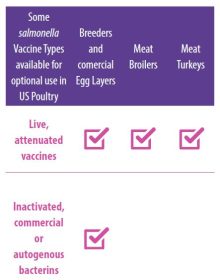
- While the majority of vaccines are currently given to breeders and layers, many complexes are also realizing the benefits of live Salmonella vaccines in broiler and turkey operations.
- This trend in enhanced vaccination is consistent with successes seen in U.S. and other countries with Salmonella reduction in egg layers due to vaccines.
- Pilot studies were also submitted to FSIS in 2024 by multiple companies and complexes that were realizing the benefits of vaccinating broilers.
- Further development of vaccines to address selected serotypes will be important to address expected shifts in predominant strains.
- Some researchers and veterinarians have also utilized blood antibody testing to look for immune responses in order to understand the effectiveness of vaccines.
7. ENHANCED BEST FARM MANAGEMENT PRACTICES AND BIRD HEALTH
- The reduction of pests such as darkling beetles is gaining renewed emphasis in many complexes.
- Some companies are beginning to understand how the reduction of darkling beetles can correlate to reduced pathogen loads at the farm and ultimately in processing.
- Controlled studies have shown that the presence of Salmonella in poultry gut tissues increases with darkling beetles compared to those without (Roche et al., 2009. Poult. Sci. 88: 44-48).
- Also, rodent management remains critical to reduce some of the most predominant serotypes, such as serovars of Salmonella Infantis that have been shown to proliferate in some poultry operations (Umali, et al., 2012. Avian Dis. 56(2): 288-294.).
- Veterinarians and nutritionists have continued their multi-hurdle approaches to achieve gut health through Eimeria control using a variety of feed additives and vaccines.
- Biosecurity practices put in place to prevent Avian Influenza also are beneficial to reducing exposure to the introduction of Salmonella, Campylobacter, and other pathogens.
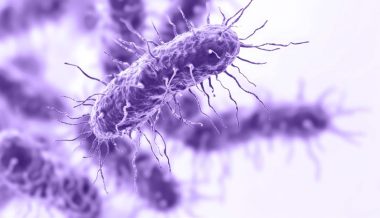
8. PROCESSING PLANT ANTIMICROBIAL OPTIMIZATIONS
- In U.S. poultry plants, many variations and combinations of designs have led to facilities having to be creative in how antimicrobials are used to reduce pathogens.
- Some operations may utilize very little chemical compounds, while other operations use combinations of dips, sprays, brushes, and rinses to achieve pathogen reduction requirements.
- Automated sensors are frequently used to regulate consistent flow of chemicals when utilized.
- Sanitary carcass dressing procedures are now frequently monitored ongoing with digital electronic controls of ongoing machine checks by production, QA, and/or maintenance staff.
- Poultry slaughter plants commonly use indicator organisms to compare microbial loads early in the process, such as at hot rehang, to microbial loads downstream after chilling.
- Statistical Process Control or data analytic systems are being used by many plants to monitor machine performance, and track trends to ensure the expected microbial reductions occur consistently throughout the plant.
- Quantitative Salmonella cfu/mL(g) is now also commonly measured in addition to indicator organisms such as aerobic plate count or Enterobacteriaceae.
9. MICROBIOME EMPHASIS IS GROWING IN POULTRY RESEARCH
- With the continued development of streamlined technologies for whole genome sequencing, researchers across the U.S. and other countries have been taking a deeper look at the effects of Salmonella reduction strategies on microbiome indicators.
- The value of this approach to studying Salmonella pathogenesis is that a complete picture of microorganisms proliferating in poultry samples can be evaluated across the vertical integration process (Marmion, et al., 2021. Food Micro. 99:103823).
- Artificial intelligence can be a key component in the future to utilize during genome sequence analysis. This tool may be able to help explain the relationship between biological indicators that can be controlled in order to address pathogenic bacteria.
- Some researchers already are studying combinations of interventions simultaneously using these techniques of microbiome analysis (Graham et al., 2020. Front. in Micro., 10:3064).
10. ONE HEALTH APPROACH
- There is a growing trend in the U.S. for scientists to consider all facets of “One Health” when implementing biological system changes. One Health refers to the concept of working to simultaneously achieve healthy people, animals, plants, and environment (Figure 2).
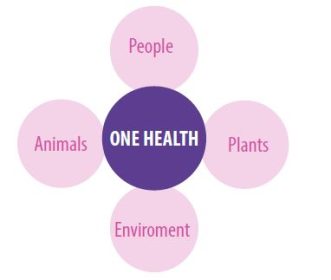
- The U.S. Centers for Disease Control has emphasized coordinating, communicating, and collaborating as keys to achieving sustained progress in OneHealth initiatives (cdc.gov/one-health/about/index.html).
- In a similar manner, for the U.S. poultry industry to continue to drive down Salmonella incidence rates, ongoing communication and feedback will continue to be necessary between all facets of live operations, processing, academia, researchers, and biotechnology firms.
In summary, the U.S. poultry industry is continuing to make improvements to minimize risks of Salmonella illnesses. The integration of holistic farm-to-plant strategies, in combination with data driven continuous improvement are major areas of focus for the poultry industry. Researchers and biotechnology companies are continuously looking at new methods to understand the causes of Salmonella, while developing effective mitigation strategies.
*References upon request to the author
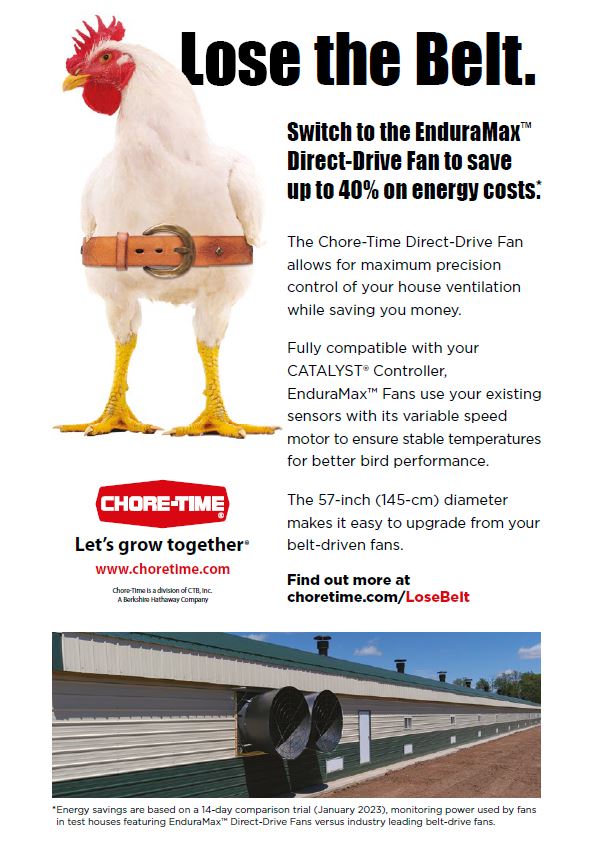
🔒 Eksklusibong nilalaman para sa mga rehistradong gumagamit.
Magrehistro nang libre upang ma-access ang post na ito at marami pang iba. Isang minuto lang at magkakaroon ka ng agarang access.
Mag-loginMagrehistro sa aviNews
MAGREGISTER